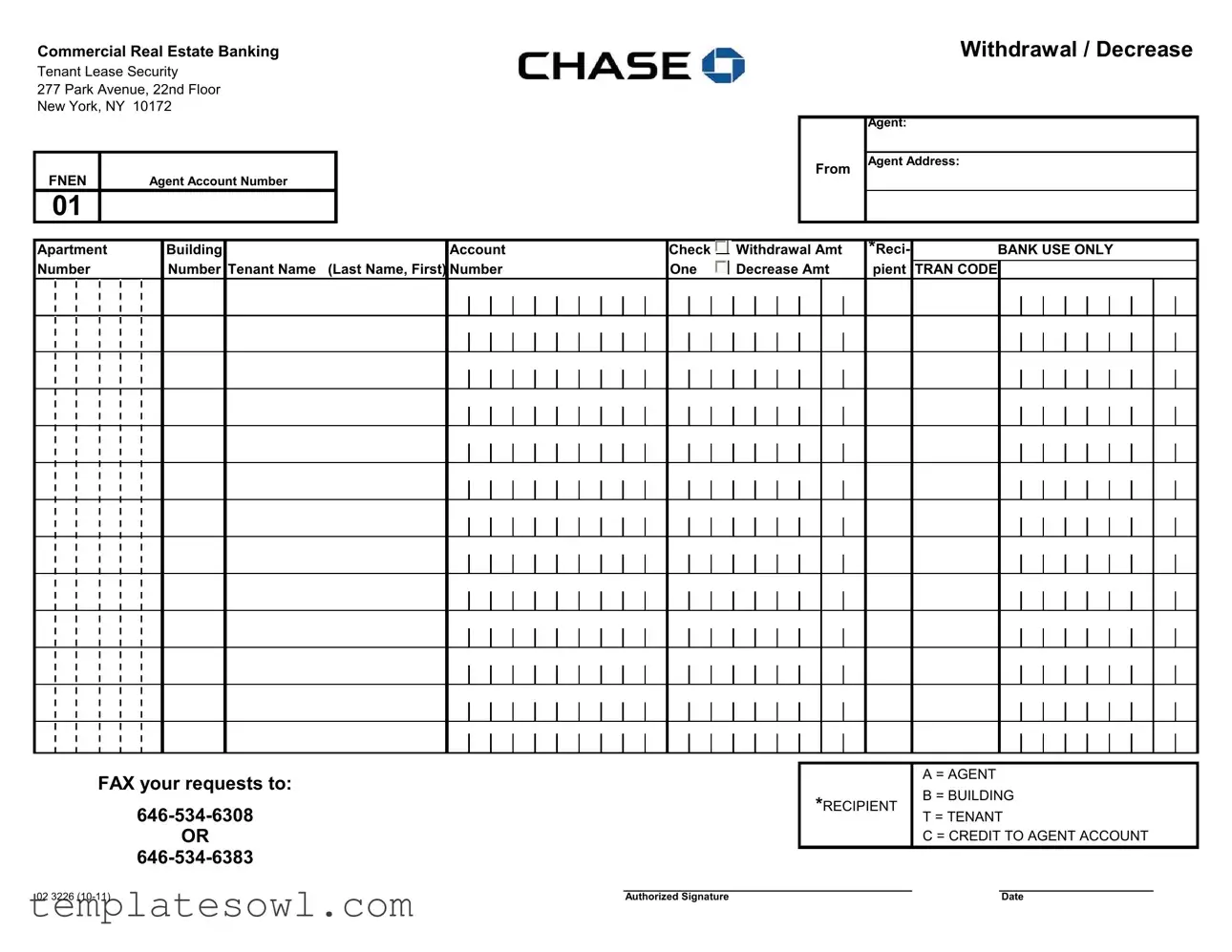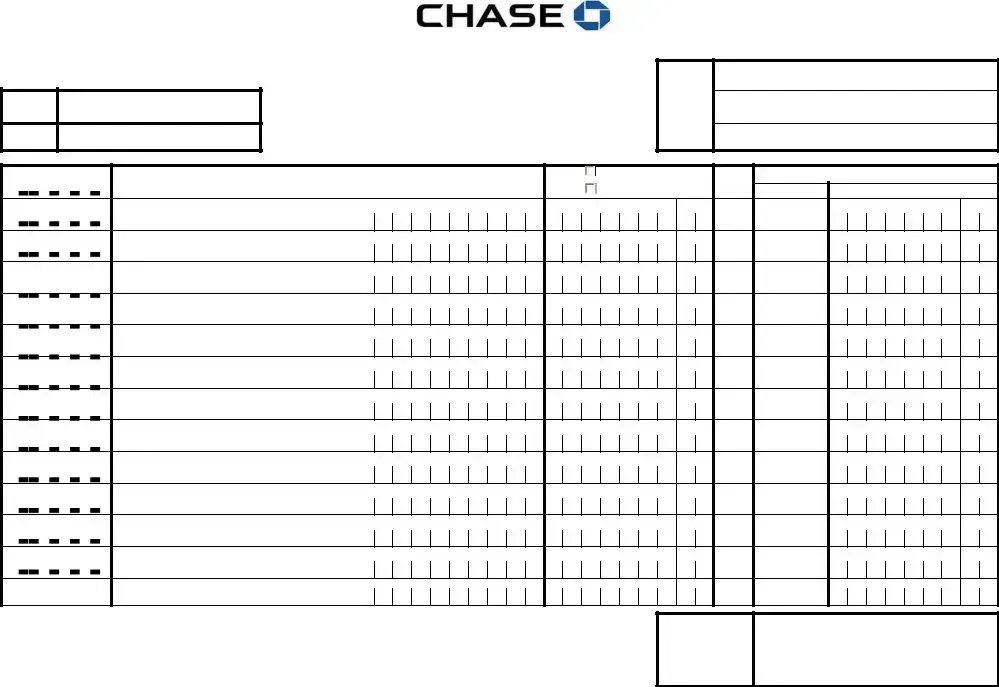The Chase Withdrawal Slips form facilitates important transactions within the commercial real estate banking sector, streamlining the process of making withdrawals or decreases in account balances. This form is designed to be filled out by agents, with sections dedicated to important details such as agent information, account numbers, and tenant names, which help ensure accurate record-keeping. Located at 277 Park Avenue, the form serves clients in New York, providing a direct contact point for maintaining transaction integrity. Users must indicate the type of request — whether it is a withdrawal of funds or a decrease in an existing amount. Notably, the form includes a section to specify the recipient of the transaction, detailing the options for crediting to either the agent’s account, the building account, or the tenant's account. The submission process is direct, allowing for requests to be faxed to designated numbers for expedient processing. Additionally, an authorized signature field and date capture are crucial elements, ensuring that the transaction is authorized and documented properly for legal compliance and future reference. This form thus plays a vital role, not just in facilitating immediate financial activities, but also in reinforcing the broader framework of accountability and transparency in commercial real estate transactions.

